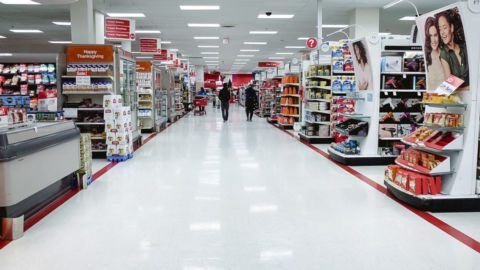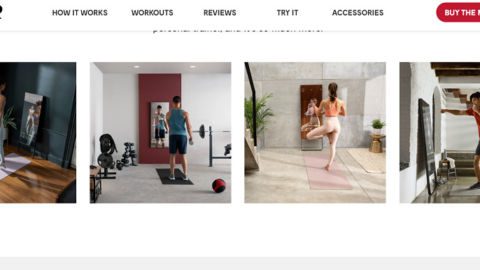By Tom Ryan, RetailWire
|
Editor’s Note: This article is an excerpt from one of RetailWire’s recent online discussions.
Each business morning on RetailWire.com, retail industry execs get plugged in to the latest news and issues with key insights from a “BrainTrust” panel of retail industry experts. |
Mimicking the pizza delivery wars of the eighties, retail turf battles are occurring in the “Buy Online, Pick-Up In-Store” arena, according to Kurt Salmon Associates. The need for turnaround speed comes as several retailers report that 40% of their online purchases are being picked up in-store.
On the one hand, the push is for shortest turnaround times. The average promised turn time is two hours, according to KSA. But Best Buy recently reduced its turnaround guarantee to 45 minutes. Lowe’s just cut its turnaround time to 20 minutes. Still, some retailers’ guarantees remain within four hours.
Wait time is also critical at the pick-up counter. Sears hands out five-dollar coupons if it takes longer than five minutes for a customer to get their order once they reach the store.
“Once the offering is ubiquitous, speed will be the killer app,” said Noam Paransky, a retail strategist at Kurt Salmon Associates, in an interview with RetailWire.
For the most part, he said, the performance has been good.
“Sears posts a board when you arrive at the pick-up counter that shows how long you (and others) have been waiting (by last name) and shows their previous day and previous month performance relative to their five minute promise,” Paransky said. “We recently shopped a store that was at 100% the previous day and 98% the previous month. We received our order at the counter in 53 seconds.”
But the required functionality can be challenging during peak shopping times. Some inventory listed may already be in customers’ shopping carts and result in angry consumers at the pick-up counter. Under-reporting inventory will risk unsold merchandise on the shelf. Walmart recently suffered a service failure where they offered items that were part of a limited stock, doorbuster promotion.
“Some shoppers had items sell out in the midst of their online checkout,” Paransky said. “Others received order confirmations only to find out later that the item was no longer available when they went to pick it up and were offered instead what consumers thought was an inferior substitute.”
Paransky said tight inventory management and a near real-time inventory feed to the web store is critical for reducing the likelihood of service failures. He believes pick-up confirmations shouldn’t be sent out until the order is complete and waiting at the pick-up counter.
“Nothing related to this service appears to create ‘customers gone wild’ more than coming into the store to find out their order cannot be satisfied after being told otherwise,” he said.
But retailers will particularly benefit if they can effectively encourage a second in-store visit at the time of pick-up, Paransky added. He also expects the service will continue to grow since consumers are clearly enjoying the convenience.
“Consumers want instant gratification,” he said.
Although the BrainTrust panel differed in opinions on whether the “buy online, pick-up in-store” model would last past the holiday season, all agreed that there are vital adjustments to be made if retailers want to utilize the system effectively. The key issues touched upon were inventory management and efficient pick-up processes. Without a focus on these concepts, the overall consensus was that consumers would steer clear of the model completely.
“Until we have Star Trek-like transporter technology, buy online/pick-up in-store is going to continue to be an important part of instant gratification,” said Nikki Baird, Managing Partner, Retail Systems Research. “But retailers need to have two critically important things: up-to-date, accurate inventory in stores, and a way for store employees to contact customers directly to let them know if something goes awry before they get to the store. Consumers will forgive a lot of screw-ups, as long as the retailer is proactive about letting them know. It won’t be a differentiator for long, that’s for sure.”
However, some panelists believed that consumer lifestyle and preference would always reign supreme in determining if “buy online, pick-up in-store” would be top shopping method.
“Consumers have different lifestyles so some prefer home delivery, some want to pick it up, some like to shop,” said Camille Schuster, President, Global Collaborations, Inc. “However, when any of these consumers are promised items, they expect to get them. Whatever the retailers promise, i.e., five-minute fulfillment, two-day delivery, or in stock to retrieve after paying, consumers expect to have happen. When making these promises retailers face two pressures: (1) to keep up with the competition; and (2) manage inventory and information to fulfill the promise to the consumer. Do not make a promise that you cannot deliver. Disappointing consumers is a good way to lose their business.”
James Tenser, Principal, VSN Strategies, agreed that a variety of delivery of options will always be made available by retailers to reach a larger number of shoppers. “Shopper convenience is not a single construct but a set, and individuals will seek the balance among them,” he said. “Many retailers correctly reason that they must offer a preorder-online pick-up-in-store (POPU) option to satisfy a certain percentage of purchase occasions.”
All panelists agreed that the model can maintain momentum if retailers avoid making doorbuster, special sale merchandise, or hot-ticket items available for online shopping and in-store pick-up. This alteration would decrease chances of depleted inventory and, in the end, lessen customer disappointment and service complaints.
“Applied with some common-sense principles (never use for doorbuste” specials, for example), POPU will help retailers capture some purchases that might otherwise be sacrificed in the share-of-wallet wars,” Tenser said.
In the end, Bill Hanifin, Managing Director, Hanifin Loyalty LLC, said that although it is important for retailers to remain ahead of the curve in terms of shopping trends, the biggest mistake they can make is try to extend past their reach.
“If I were the retailer, I would not advertise any item that was a doorbuster or on similar special, nor would I include items that are subject to stock-outages,” Hanifin said. “With just a bit of selectivity, a host of potential customer disappointments could be avoided. I think retailers outsmart themselves when striving to serve the instant gratification need of customers. Make service quick and responsive, but don’t set up unreasonable deadlines that open the door to poor customer experience.”
Although shopping for convenience is key for today’s Internet-savvy consumers, it’s evident with the controversy over the “buy online, pick-up in-store” model that efficient delivery will always rein supreme for a positive shopping experience.










